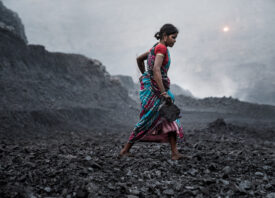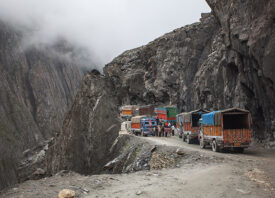Search this site
These Cannabis Farmers Carry Out an Ancient Tradition High in the Himalayas

A woman and her granddaughter walk back from the cannabis fields. Many farmers move to the fields with the entire family for the harvesting month.
Approximately 8,900 feet above sea level, perched high in the Himalayas among jagged snow-capped peaks, is a small Indian village overlooking a valley. It has a population of about 800 people and can only be reached on foot. It is a three-hour hike from a drivable road along a steep path up the mountain. Photographer Andrea de Franciscis and reporter Maria Tavernini traveled here to document this place where ganja grows wild.
About half the citizens of this village make their living by manually extracting a valuable resin, known as “charas,” from the live plants of cannabis indica, a flower that is native to India. It is a risky life, making money in a country where marijuana use is widespread and tolerated, but its cultivation is illegal. However, cannabis farming has enabled many families to escape poverty and hunger. “I do it to enable my children to have a better life,” says a man named Suraj with a proud grin. “I’m a jungle boy, I never went to school, but my three children are all educated.” Many cannabis farmers have never grown anything legal in their life, and there are no real alternatives on the horizon. To them, charas is a gift from the gods; its cultivation, production and use are imbued with spirituality and religion. Hindus believe that the god Shiva sat in meditation on the Himalayan snow-capped peaks, feeding on cannabis flowers. But for these villagers, today, it’s all about business.

A cannabis farmer (Suraj) walks through the tall stalks of the plants in his fields. The fields are located at about 10,000 feet above sea level, on steep slopes and plateaus.

A local man sticks off the charas he just rubbed from his hands. The manufacturing of charas, compared to the usual beating and filtering of dry plants, takes more time and gives less but more qualitative resin. Charas, unlike other types of hashish, is produced by rubbing in the hands the freshly-cut flowers and then peeling off the resin from hands.

A boy looks out over the valley from the wooden balcony of his family home at the end of the harvesting season.
Read Maria Tavernini’s full story with photography by Andrea de Franciscis on Narratively.



